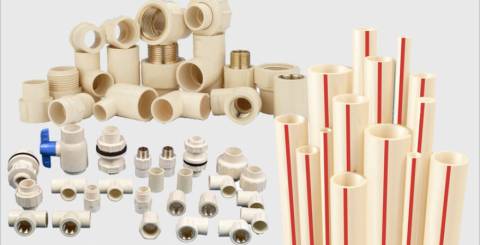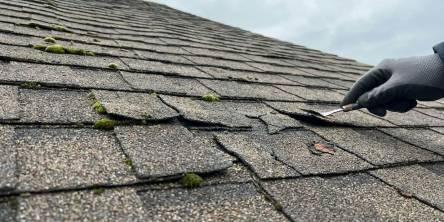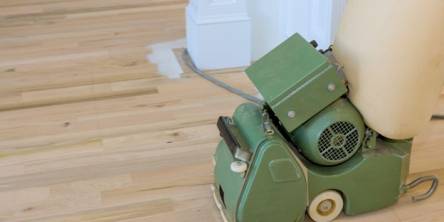Selecting the Pipelines Prepared for the Plumbing of Cold and Hot Water in Winters

During winters, we all prepare ourselves well for the chilly weather. But we never realise the damage that winters can cause to the traditional piping systems that are being used. In winters, the pipes not only have to suffer the flow of cold water from the tanks, but they’re also subjected to the heated water flow from the geyser and other water heating devices.
Due to these reasons, it becomes necessary to think before installing piping systems. There are many options available in the market for separate purposes, and each one has its own pros and cons. This gives us a wide variety to choose from but also requires knowledge of piping systems.
Galvanised Pipes
The traditional pipes that were used in residential areas and commercial buildings are not proven effective for plumbing with hold and cold waters. These are the galvanised pipes; they’re not highly corrosion-resistant, nor can they be used for the transportation of potable water. Moreover, extremely hot and cold water can damage the pipes from inside. The galvanised pipes can also form clogs and leach the water. Due to so many drawbacks, they are not preferred for plumbing nowadays.
Copper Pipes
Copper pipes can be a good option for plumbing in winters. They can withstand extreme hot and cold temperatures. Apart from this, they are very reliable and can last for more than 50 years. Copper pipes do not leak or corrode, nor can they pollute water as bacteria cannot invade these pipes. They can be recycled and are easily available. The few drawbacks it has include the high cost and other environmental concerns regarding the copper mining projects.
Brass pipes
Brass pipes were used as a cheaper alternative to copper pipes. The problem with these pipes was that brass contained lead, and it is one of the biggest health hazards known to man. Later the industry shifted to lead-free brass, but these brass pipes are expensive.
PEX pipes
Cross-Linked Polyethylene pipes, also known as PEX, are one of the favourites when it comes to hot water plumbing. These pipes are resistant to rust and corrosion. They can last forever until they don’t break somehow. These pipes are very flexible and easy to install. They do not require any soldering. It can perfectly suit the winter season as it can withstand extreme hot and cold temperatures. Also, they’re more cost-effective than copper pipes. The PEX pipes do have some major drawbacks, like they cannot be used outdoors as they can be damaged by sunlight. Some of these pipes can also cause bad taste and odour in water.
CPVC Pipes
CPVC (Chlorinated Polyvinyl Chloride) pipes are made from the same element as PVC (Polyvinyl Chloride) pipes, but CPVC pipes are chlorinated, and thus, they can be used for transporting hot and cold water without being damaged. If both of these materials are compared cost-wise, then CPVC is more expensive, but there are numerous benefits. The CPVC pipes are available in two sizes, Nominal Pipe Size (NPS) and Copper Tubing Size (CTS), whereas the PVC pipe manufacturers provide the pipes only in one size, i.e., NPS.
The CPVC pipes also provide many other benefits like long life as it does not corrode or rust, and it can handle the high pressure of water. The pipe is easy to move and install as it is lightweight, costs less than other metal materials. But the one clear advantage over CPVC over other piping materials is that it can withstand high temperatures. These pipes can easily take up to 200-degree Fahrenheit temperature. Thus, it is also used by water tank manufacturers. But, the only disadvantage of this material is that it can break down as a result of prolonged exposure to sunlight.
Now that we are equipped with enough knowledge about the types of plumbing pipes, their purposes, and their advantages and demerits, we can choose pipes for the chilling winter. Do keep these pros and cons in mind the next time you pick a pipe.
Similar Articles
Luxury interiors are not built through clutter. They come through calm. They come through balance. They come through the quiet presence of well-chosen materials.
Discover modern wallpaper styles that elevate any room. Explore 2025–2026 trends, peel-and-stick options, textures, accent walls, and tips for choosing the right look.
Energy efficiency has become a top priority for homeowners as energy costs rise and comfort expectations increase. While many people focus on windows, insulation, or appliances, the roof plays a major role in regulating indoor temperatures.
Refresh your driveway without replacing it. Discover budget-friendly cleaning, repair, resurfacing, and design ideas that boost curb appeal and durability.
We all know that roofs don’t last forever, but how do you know when it's really time to replace yours? After all, your roof is out of sight, out of mind, right?
As winter settles in and temperatures drop, families across the country brace themselves for the inevitable spike in energy bills.
Wooden floors have long been the subject of admiration for their classic beauty, natural warmth, and strength.
When it comes to giving your home a fresh coat of paint, most homeowners focus on choosing the perfect color and finish.
The holiday season transforms neighbourhoods into glowing wonderlands, but today's homeowners are moving beyond the traditional approach of simply stringing lights wherever they fit.









